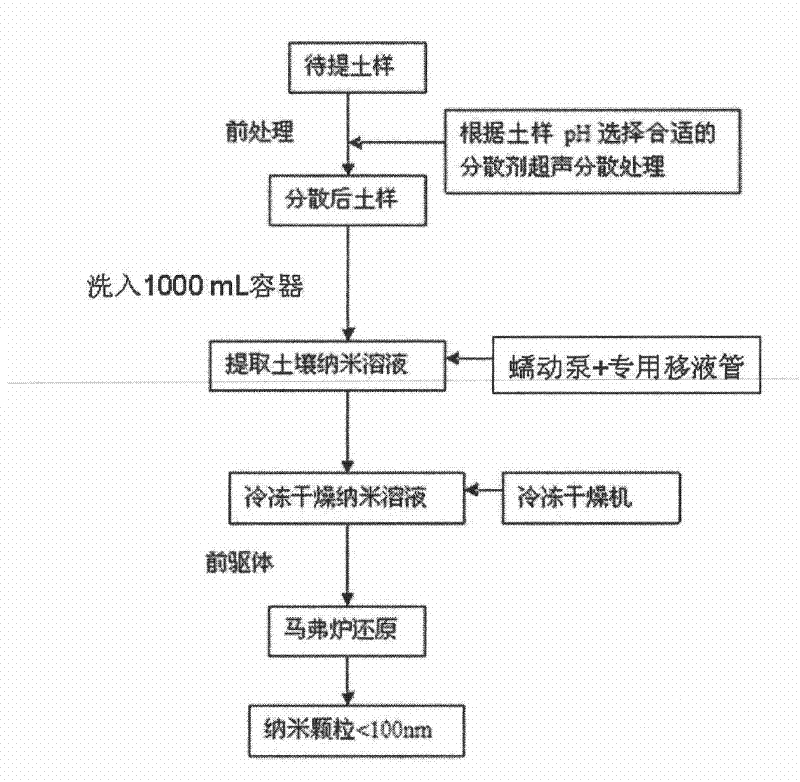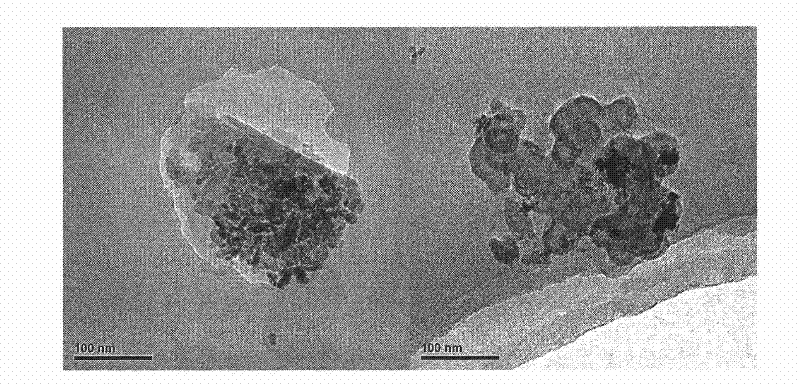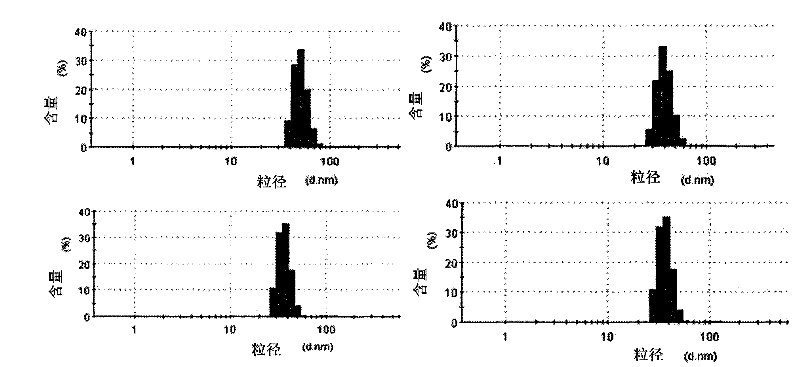Method for extracting nanoparticle from soil
A nanoparticle and soil technology, applied in the field of soil chemistry, can solve the problems of inability to ensure the parallelism and accuracy of analysis, the particle size of the extracted product is easy to introduce human errors, and the separation effect of nanoparticles is not ideal, so as to achieve reliable extraction results and liquid absorption. The speed is fast and uniform, and it is convenient to study the effect of work
- Summary
- Abstract
- Description
- Claims
- Application Information
AI Technical Summary
Problems solved by technology
Method used
Image
Examples
Embodiment Construction
[0029] Extraction of Nanoparticles from Red Soil
[0030] Four red soil samples collected in Kunming, Yunnan were air-dried at room temperature. After removing debris such as gravel, cuttings, and plant roots in the soil sample, the soil sample was crushed and sieved, ground to fineness, and passed through a 100-mesh sieve. Weigh 20g of the soil sample passed through a 100-mesh sieve into a 500mL Erlenmeyer flask, and add 20mL of 0.5M sodium hydroxide. Add another 250mL of distilled water to soak overnight. Shake the soil liquid, ultrasonically disperse for 40min at 20°C and 45W, and wash the soil suspension into a 1000mL settling container with distilled water. The control soil suspension is 1000mL.
[0031] Measure the water temperature of the soil suspension at 23°C, and calculate the time for the soil particles less than 100nm to settle to the 5cm of the settlement container according to the water temperature. Stir the suspension with a stir bar for 1 min, starting fro...
PUM
| Property | Measurement | Unit |
|---|---|---|
| particle diameter | aaaaa | aaaaa |
Abstract
Description
Claims
Application Information
 Login to View More
Login to View More - R&D
- Intellectual Property
- Life Sciences
- Materials
- Tech Scout
- Unparalleled Data Quality
- Higher Quality Content
- 60% Fewer Hallucinations
Browse by: Latest US Patents, China's latest patents, Technical Efficacy Thesaurus, Application Domain, Technology Topic, Popular Technical Reports.
© 2025 PatSnap. All rights reserved.Legal|Privacy policy|Modern Slavery Act Transparency Statement|Sitemap|About US| Contact US: help@patsnap.com



